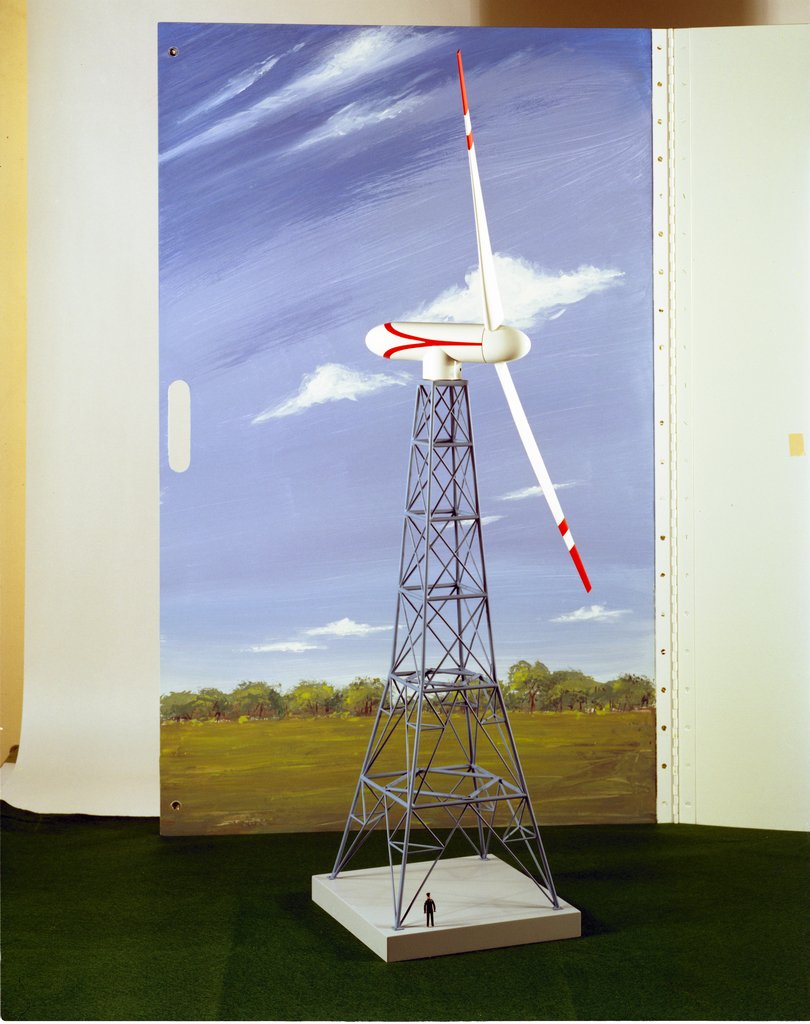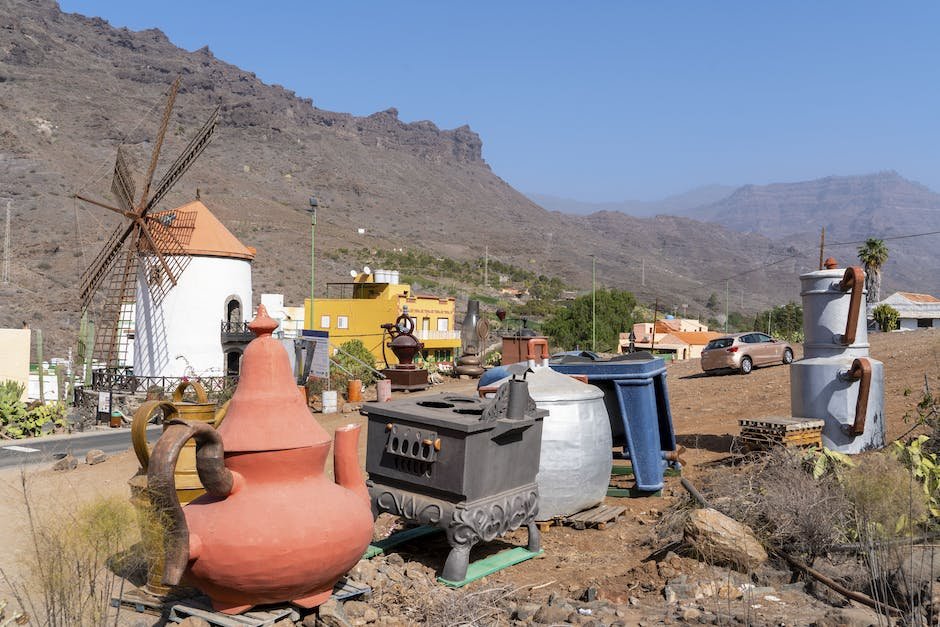Surrounded by a mesmerizing landscape, quaint windmills gracefully twirl under the watchful eye of the ever-changing weather. They have long fascinated us with their ability to harness the invisible force of the wind and transform it into a boundless source of energy. Today, as our pursuit of sustainable living intensifies, more and more people are yearning to bring the enchantment of wind power into their own lives. If you are eager to join this noble quest and embark on the exhilarating journey of building your very own DIY windmill, prepare to unlock a world of affordable and renewable energy that will leave you in awe. In this article, we will guide you step-by-step through the intricate process, empowering you to become the master of your own wind-powered destiny. Get ready to harness the power of the wind and watch as your DIY windmill sweeps you into a future of energizing possibilities.
Table of Contents
- Choosing the Right Location for Your DIY Windmill Project
- Essential Components and Tools Needed for Building a DIY Windmill
- Step-by-Step Guide to Constructing Your Own Windmill for Renewable Energy
- Optimizing Efficiency: Tips for Enhancing the Performance of Your DIY Windmill
- Ensuring Safety and Maintenance of Your DIY Windmill
- Q&A
- To Conclude

Choosing the Right Location for Your DIY Windmill Project
When embarking on a DIY windmill project, one of the most important factors to consider is the location where it will be installed. The right location can ensure optimal efficiency and maximize the benefits of your renewable energy endeavor. Here are some key factors to consider when choosing the perfect spot:
- Wind exposure: Look for an area with consistent, strong winds. Ideally, the wind should be uninterrupted by tall obstacles such as trees or buildings.
- Accessibility: Ensure that the location is easily accessible for regular maintenance and repairs. This will save you time and effort when it comes to upkeep and troubleshooting.
- Property boundaries: Consider the size of your property and any local regulations or restrictions regarding windmill installations. It’s essential to place the windmill in a location that complies with local laws and does not encroach on neighboring properties.
Additionally, it is important to evaluate the geological aspects of the location:
- Soil stability: Choose a spot where the ground is stable and able to support the weight of the windmill structure. Avoid areas with loose soil or high water tables that could compromise the stability of the foundation.
- Elevation: Opt for a higher elevation if possible, as wind tends to be stronger at higher altitudes. However, be mindful of any zoning restrictions that may be in place for certain areas.
By carefully considering these factors, you can select the perfect location for your DIY windmill project, ensuring its success and helping you harness the power of the wind efficiently.

Essential Components and Tools Needed for Building a DIY Windmill
Embarking on a do-it-yourself windmill project can be a rewarding and environmentally-friendly endeavor. Before you get started on harnessing the power of the wind, it’s essential to gather the necessary components and tools. Here, we present a list of items that will help you successfully construct your very own windmill.
Components:
- Blades: Opt for durable materials such as PVC or fiberglass to withstand the wind’s force.
- Hub: Connects the blades to the main shaft and allows them to rotate.
- Main shaft: Transfers the rotational energy from the blades to the generator.
- Generator: Converts the rotational energy of the wind into electrical energy.
- Tower: Supports the windmill and keeps it at an optimal height to capture the strongest wind currents.
- Inverter: Converts the direct current (DC) produced by the generator into alternating current (AC) for household use.
- Batteries: Store excess energy generated by the windmill for times when the wind is not blowing.
Tools:
- Tape measure: Essential for precise measurements during assembly.
- Electric drill: Needed for creating holes and fastening components together.
- Saw: Used to cut and shape the blades and other materials.
- Wrenches: Different sizes for tightening bolts and nuts.
- Screwdrivers: Flathead and Phillips head for various types of screws.
- Wire cutters and strippers: Required for electrical connections.
- Safety equipment: Gloves, goggles, and a hard hat to protect yourself during construction.
Once you have these essential components and tools at your disposal, you’ll be ready to dive into the exciting world of windmill construction. Remember to take adequate safety precautions, follow instructions carefully, and enjoy the journey of harnessing renewable energy in your own backyard.

Step-by-Step Guide to Constructing Your Own Windmill for Renewable Energy
Are you eager to harness the power of renewable energy and contribute to a greener future? Look no further! By following this comprehensive step-by-step guide, you will soon be on your way to constructing your very own windmill, becoming a champion of sustainable energy in your community.
Materials Needed:
- Wind turbine kit (includes blades, hub, and generator)
- Steel support pole
- Batteries and inverter for energy storage
- Wire cutters and crimping tool
- Concrete and anchor bolts
- Weatherproof electrical box
- Supplementary materials based on your specific design
Step 1: Site Selection
Before proceeding, determine a suitable area for your windmill. Look for an open space with unobstructed access to prevailing winds to maximize energy production. Consider local regulations and obtain any necessary permits or approvals. Safety should always be a top priority.
Step 2: Assemble the Wind Turbine Kit
Follow the manufacturer’s instructions to carefully assemble the wind turbine kit. Ensure all components are securely attached and properly aligned for optimal performance. It’s crucial to double-check each step, as even minor mistakes can affect the windmill’s efficiency.
Note: Handling the blades with caution is essential. Keep them stored safely before installation to prevent any accidental damage or injuries.
Step 3: Install the Support Pole
Dig a hole and pour concrete to secure the support pole in place. Make sure it is vertically aligned and firmly anchored. It is vital to choose a location that can endure the windmill’s height and weight. Once the concrete has cured, attach the wind turbine kit to the top of the support pole.
Step 4: Connect the Electrical Components
Using wire cutters and a crimping tool, connect the wind turbine’s generator to the batteries and inverter. Ensure all connections are secure and insulated to avoid any electrical hazards. Additionally, install a weatherproof electrical box to protect the system from the elements.
Remember: If you are unfamiliar with electrical systems, consult a professional to guarantee a safe and efficient setup.
That’s it! With determination, patience, and attention to detail, you now have a fully functional windmill, ready to harness the power of the wind and generate renewable energy. Enjoy the benefits of reduced carbon footprint and the satisfaction of contributing to a sustainable future.
Optimizing Efficiency: Tips for Enhancing the Performance of Your DIY Windmill
Tips for Enhancing the Performance of Your DIY Windmill
1. Perfect Your Blade Design: One of the key factors in optimizing the efficiency of your DIY windmill is to ensure that your blade design is impeccable. Experiment with different shapes, sizes, and materials to find the perfect combination that maximizes wind capture. Remember to balance weight and aerodynamics to achieve optimal results.
2. Location Matters: The placement of your windmill plays a crucial role in its performance. Identify an area with an unobstructed and consistent wind flow to increase efficiency. Avoid installing your windmill near tall buildings, trees, or any other obstructions that may disrupt the wind speed and direction. Additionally, consider elevating your windmill to harness higher winds that may exist above the ground.
3. Regular Maintenance: To keep your DIY windmill operating at peak performance, regular maintenance is essential. Regularly inspect and clean the blades, ensuring they are free from dirt, debris, and any signs of damage. Lubricate the moving parts, such as the pivot points and gears, as needed. Regularly monitor the condition of the wiring and electrical components to prevent any potential issues.
4. Invest in Efficient Components: Upgrading certain parts of your DIY windmill can significantly enhance its efficiency. Consider investing in high-quality, low-friction bearings to minimize energy loss. Additionally, opting for a more efficient generator or alternator can improve the conversion of wind energy into electricity.
Remember, every DIY windmill is unique, so don’t be afraid to experiment and tweak your design to find what works best. With dedication and these optimization tips, your DIY windmill will be in prime performance, harnessing every gust of wind to generate clean and renewable energy.
Ensuring Safety and Maintenance of Your DIY Windmill
When embarking on the exciting journey of building your own windmill, it’s essential to prioritize safety and the regular maintenance of your creation. By following a few simple guidelines, you can guarantee safe operation and longevity for your DIY project.
Safety Guidelines:
- Location and Permitting: Before installing your windmill, carefully consider its placement. Ensure it complies with local regulations and zoning laws, and obtain any necessary permits. This prevents potential hazards and legal issues in the future.
- Proper Foundation: The foundation provides stability and support for your windmill. Ensure it is well-built, allowing it to withstand strong winds and maintain its structural integrity.
- Electrical Safety: If your windmill involves electrical components, ensure proper grounding and follow all safety measures. Use waterproof and well-insulated wiring, and regularly inspect and maintain the electrical connections.
- Maintenance: Regularly inspect your windmill for any signs of wear or damage. Perform routine maintenance tasks such as cleaning the blades, checking lubrication, and tightening any loose bolts or connections. This ensures optimal performance and prevents any potential malfunctions.
Regular Maintenance Tasks:
- Inspect Blades: Periodically examine the windmill blades for any cracks, chips, or other damage. If you notice any issues, promptly repair or replace them to maintain efficiency and prevent safety hazards.
- Check Alignment: Ensure that the windmill’s components remain properly aligned. Misalignment can result in increased friction, decreased efficiency, and potential damage to the system. Regularly inspect and adjust as necessary.
- Monitor Lubrication: Proper lubrication is crucial for smooth operation. Check lubrication levels regularly and apply the appropriate lubricants to moving parts. This minimizes friction and extends the lifespan of your windmill.
- Inspect Electrical Components: If your windmill has electrical components, regularly inspect the wiring, connections, and controller. Look for signs of damage, loose connections, or corrosion. Promptly address any issues to ensure safe and efficient operation.
By adhering to these safety guidelines and performing regular maintenance tasks, you can enjoy the benefits of your DIY windmill with peace of mind. Remember, safety should always come first when harnessing the power of the wind!
Q&A
Q: Can I really build a windmill to generate my own energy?
A: Absolutely! Building a DIY windmill for energy is an ideal project for those with a little technical know-how and a desire to harness renewable energy. With proper planning and the right materials, you can generate electricity right in your backyard!
Q: What are the benefits of building a DIY windmill for energy?
A: Besides the obvious advantage of generating your own renewable energy, building a DIY windmill is a cost-effective way to reduce your electricity bills. It also helps reduce your carbon footprint and promotes sustainability.
Q: Where do I start if I want to build a DIY windmill?
A: To start building your DIY windmill, you need to determine the energy needs of your household, choose an appropriate location, source the necessary materials, and plan the design and construction process.
Q: What materials do I need to build a DIY windmill?
A: Some essential materials include PVC pipes, wooden or metal poles, a generator or motor, blades, and batteries or an inverter. It’s important to make sure you have sturdy materials to withstand wind speeds and ensure safety.
Q: How much time does it take to build a DIY windmill?
A: The time needed to build a DIY windmill can vary depending on your expertise and the complexity of your design. On average, it can take a few days to a few weeks to complete, including planning, sourcing materials, and construction.
Q: Can I build a DIY windmill if I have limited technical skills?
A: While some technical skills are beneficial, there are many online resources available with step-by-step instructions and videos that can guide you through the process. With patience and a willingness to learn, it’s possible for anyone to build a DIY windmill.
Q: Is it safe to build and install a DIY windmill?
A: Safety should always be a priority when building and installing a DIY windmill. Ensure you follow all necessary safety guidelines, such as securing the structure properly, using appropriate electrical connections, and regularly maintaining and inspecting the windmill.
Q: How much electricity can a DIY windmill generate?
A: The amount of electricity generated depends on various factors, including wind speed, the size of the windmill, and the quality of the materials used. On average, a well-designed DIY windmill can generate enough electricity to power some household appliances or lighting.
Q: Are there any legal considerations before building a DIY windmill?
A: Prior to building a DIY windmill, it’s crucial to check local regulations and permits that might be required. Some areas have specific guidelines regarding noise, height restrictions, and property boundaries that need to be taken into account.
Q: Can a DIY windmill work in all weather conditions?
A: While a DIY windmill can work well in various weather conditions, it is important to consider wind patterns and speeds of your specific location. Adequate planning and design can ensure that your windmill operates efficiently most of the time.
To Conclude
As we bid farewell to our DIY windmill journey, it’s clear that we’ve embarked on a truly innovative and sustainable endeavor. By harnessing the power of the wind, we’ve not only tapped into a renewable source of energy but also paved the way for a greener future.
Creating your very own DIY windmill is no small feat, but armed with the knowledge from this article, you’ve proven yourself to be a true pioneer. With a little creativity and a lot of determination, you’ve successfully transformed simple materials into a powerful force that generates clean energy.
Remember, the windmill we’ve built today is more than just a structure. It’s a symbol of our commitment to reducing our carbon footprint, to taking charge of our energy consumption, and to embracing sustainability as a way of life.
As you stand before your newly erected windmill, marvel at the gentle whirling of its blades. Appreciate the intricate dance between nature and technology, understanding that you’re making a tangible difference for our planet, one gust of wind at a time.
Now, armed with this newfound knowledge, you have the power to share it with others. Encourage friends and family to tap into the endless possibilities of renewable energy. Inspire them to join you on this incredible journey towards a future where windmills dot the landscape, supplying clean and reliable power to communities far and wide.
So, let this be just the beginning! Let the winds of change guide you in your pursuit of sustainable living, continuing to explore inventive solutions and contributing to the collective effort of preserving our precious Earth.
As you step away from this article, know that you hold within you the blueprint for a brighter, cleaner, and more sustainable future. Dare to dream big, dare to embrace change, and dare to build your very own DIY windmill for energy. The power is in your hands, now let it soar with the wind.
As an affiliate, my content may feature links to products I personally use and recommend. By taking action, like subscribing or making a purchase, you’ll be supporting my work and fueling my taco cravings at the same time. Win-win, right?
Want to read more? Check out our Affiliate Disclosure page.